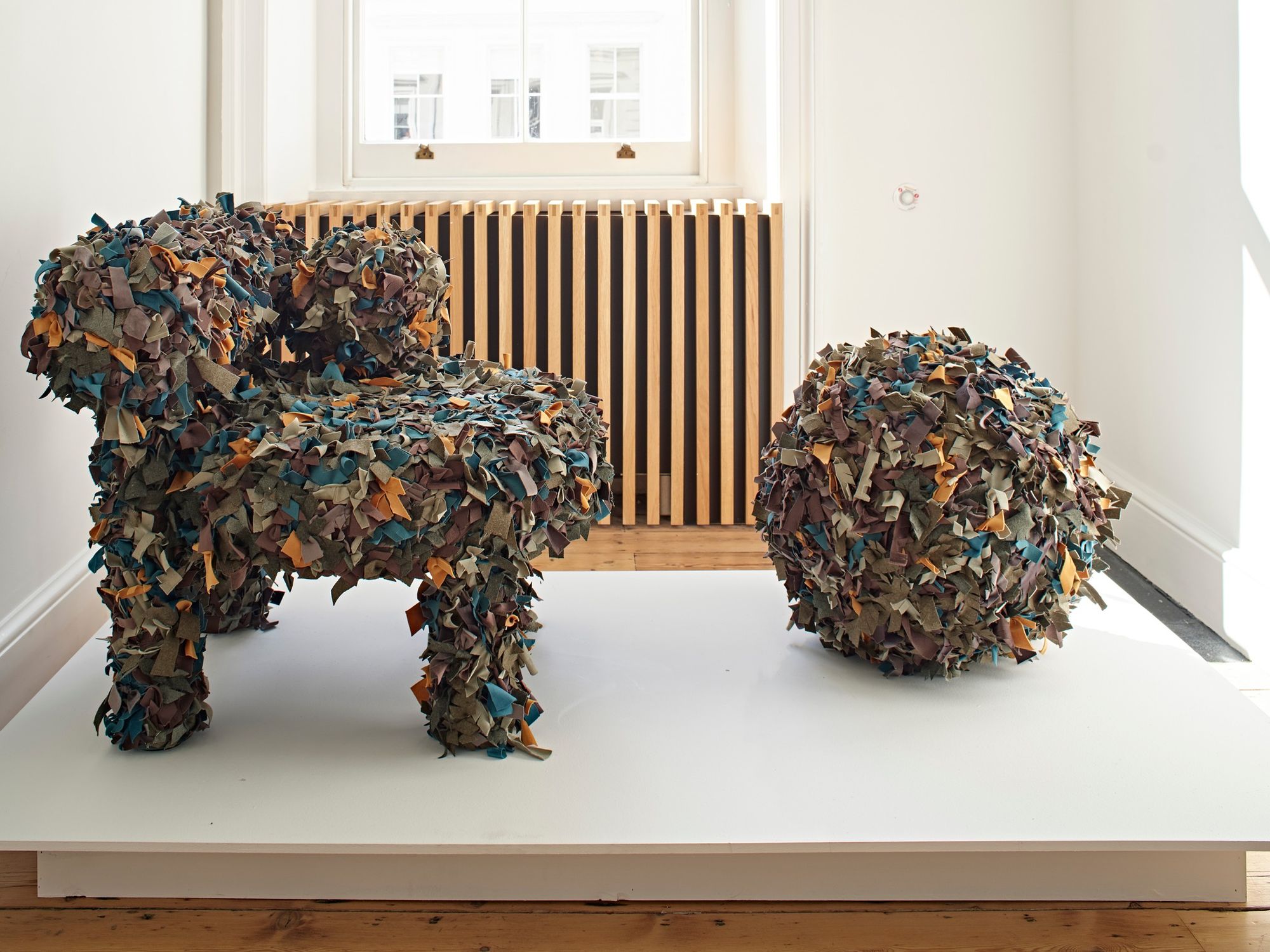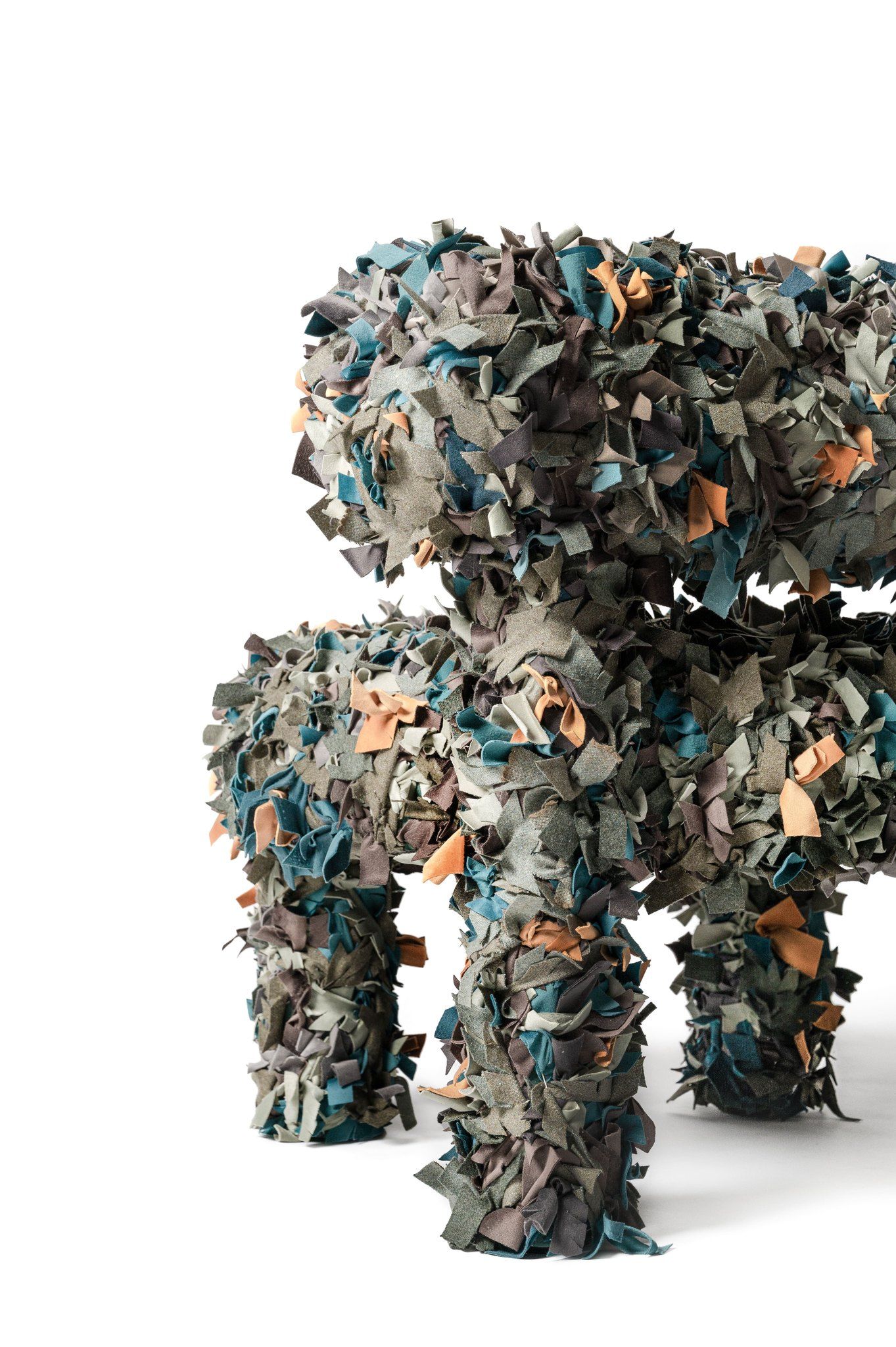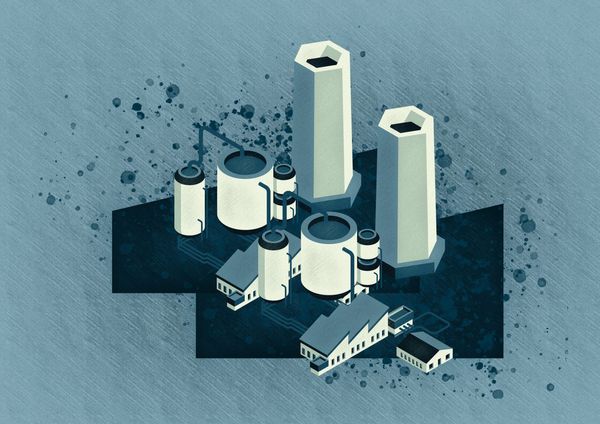What can a Ukrainian designer do if their everyday life is ruined by war? They weave their experiences into thier products—and this is literally what happened with Noom’s latest limited collection chair.
Ukraine’s once bustling creative industry has completely transformed since the outbreak of the war, and the previously celebrated designers face quite different challenges than a year ago. The couple, Kateryna Sokolova and Arkadii Vartanov, who founded their furniture brand Noom in 2017, also reacted to this situation. With their products, they aim to focus on the production of small-series pieces that require high expertise, in contrast to mass production, in order to sell high-quality furniture that serves its owners for a long time.

The original Gropius chair, which was designed years ago, was inspired by geometric shapes, mostly cylinders, and was made on the occasion of the centenary of the founding of Bauhaus School. The plywood frame is coated with foam rubber and polyester cotton, then upholstered in wool to comfortably cushion it and ensure proper ergonomics. They wanted to combine shape and function with it exactly as the great masters of the Bauhaus did in the last century. The Gropius has been a huge success ever since, which is why the new war collection was based on this piece. The Military Limited Edition’s camouflage net is made up of more than four thousand knots, on which the remaining pieces of fabric are attached. They use a special technique developed by Ukrainian volunteers in Vinnytsia at the VinnSolard Center. VinnSolard was founded by art director Antonina Latayko and producer Nataliya Bakulina to work with civilians to help the war situation.

The chair was also presented at the London Design Festival in September this year at the exhibition Ukraine: Design for Real Time. The curators emphasized that this piece of furniture, which was designed in peacetime and then remodeled with a camouflage net, shows how the profession has to meet different expectations now. Since the war, Ukrainian designers have deviated from the usual way, shifting their focus to create functional solutions that help solve problems in shelters, temporary hospitals, bombed houses, and war zones in general. They also drew attention to the fact that the people of Ukraine are forced to live their lives according to a ‘before and after’ approach, and their everyday lives are determined by the transformation of the peacetime routine into a war.

Photos: Noom

Where to invest during an economic crisis?

What is the way out of the economic crisis?










